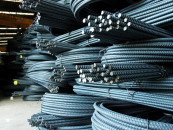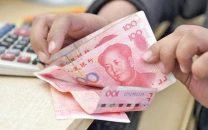Pak-India trade still a fraction of $40 billion potential
Bureaucratic hurdles, lack of infrastructure holding both countries back.

In the medium term, studies show that Pak-India trade can easily be multiplied 20 times, said Dr Mohsin S Khan, former director of the IMF. He was speaking at a seminar on “Expanding India-Pakistan Trade” organised by Pakistan Institute of Development Economics here on Monday.
Dr Mohsin S Khan is currently a Senior Fellow at the Peterson Institute for International Economics, Washington DC He said Pakistan showed greater flexibility in normalising trade ties with India, even more than what one could expect couple of years ago. He said “For the next decade India will be engine of growth in South Asia and it is up to Pakistan to get on the bandwagon.” Khan said bilateral trade was unnaturally small as Pakistan accounts for less than half per cent of India’s trade while New Delhi accounts for 3% of Islamabad’s total trade.
“Pakistan has budged from two major demands”, he added that helped things moving swiftly. By in principle granting Most Favoured Nation status to India it has finally decided to separate trade issue from Kashmir and Indus Basin Water Treaty issues, said Khan, adding, He said Pakistan has also moved away from its stance that India should first remove non-tariff barriers and then it would consider giving the MFN status while India’s view was that Islamabad should first grant the MFN status and then the issue of non-tariff barriers would be addressed.
However, Khan warned that there was still a lot to be done. He said the main obstacles to complete trade normalisation were excessive red tape which could slow process of addressing procedural harmonisation, high tariffs imposed by India and substantial non-tariff barriers.
“India has rigorously interpreted its NTBs viz a viz Pakistan that could affect Pakistani’s exports”. He said if these issues were not resolved Pakistan’s exports in the sectors of textiles, agriculture, leather and onyx could be affected.
He proposed a two-pronged strategy to address these issues. In short-term Pakistan has to completely address the issue of MFN, both the countries need to ease visa regimes, open additional border posts, increase air links, facilitate sea shipments and allow cross-border banking operations. In medium term, he advocated giving India transit facility to trade with Central Asia and Iran. “Without opportunity of transit trade to India the Indians will not have maximum benefits while trading with Pakistan. He said India should also lower tariff barriers and reduce NTBs.
He dispelled the impression that Pakistan was moving very fast. “Pakistan has moved very fast on announcements,” said Khan.
“I was a sceptic about Pakistan India trade normalisation because major stakeholders had not given importance to trade but an overwhelming response coming from all segments of the society indicates that it is in the interest of Pakistan,” said Dr Rashid Amjad Vice Chancellor of PIDE.
Published in The Express Tribune, March 13th, 2012.



















COMMENTS
Comments are moderated and generally will be posted if they are on-topic and not abusive.
For more information, please see our Comments FAQ